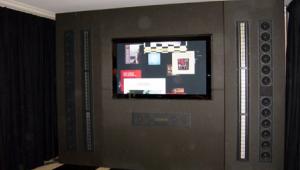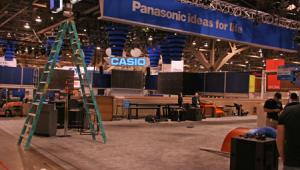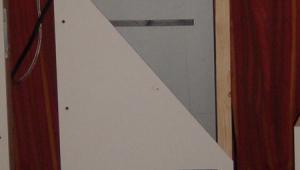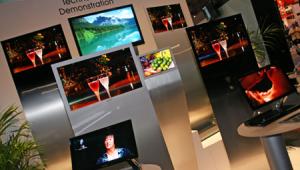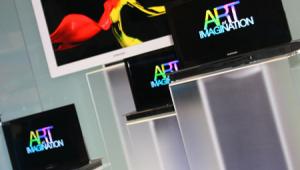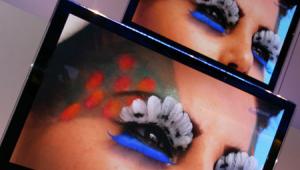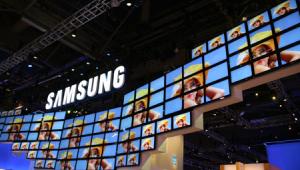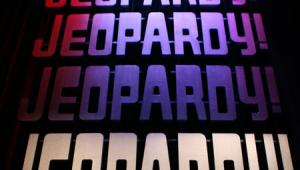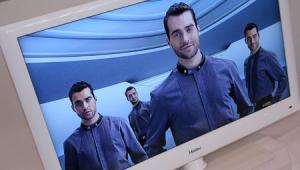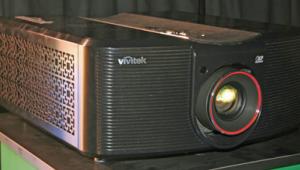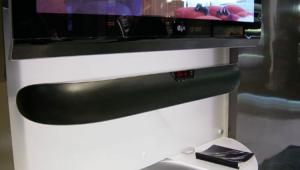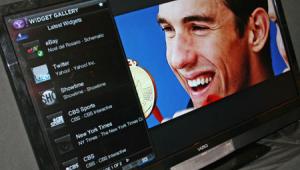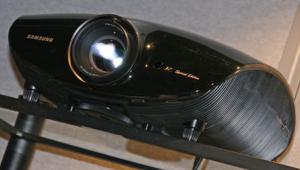Buh Bye, Vegas

As it turned out, those cab lines were virtually nonexistent this year as attendance was down by at least 20 percent. This was very evident in the aisles of the convention-center floor, which were nowhere near as crowded as they've been in years past. Another obvious sign of the sagging economy's effect on the industry was the absence of some major booths, including Texas Instruments, Philips, and Denon/Marantz. Interestingly, the press corps seemed no smaller—it was still very crowded in the major press conferences.
My beat was video displays and players, and unlike some of my colleagues, who complained that there wasn't all that much of real interest at the show, I found plenty of stuff to cover. Perhaps the biggest trend in flat panels was their shrinking depth. LG, Panasonic, Samsung, Sharp, and Sony all had flat panels around 1 inch thick that will be available this year, and many had concept LCD and plasma panels much thinner than that.
One consequence of this trend is that many of these models have no inputs, tuner, or video processor within the panel housing—instead, all that stuff is found in an outboard box that connects to the TV with a single cable. Alternatively, some of these outboard boxes communicate with the TV wirelessly, which was another strong trend at the show. Several wireless-HD systems were being demonstrated, including WHDI (Wireless HD Interface) from Amimon, WirelessHD from SiBeam, UWB (ultra wideband), and WiFi (802.11n). Each system has its own strengths and weaknesses, and different manufacturers are implementing one or another in their products—in fact, some companies are members of multiple wireless consortiums, hedging their bets in yet another format war.
Speaking of format wars, there's another one brewing in the realm of 3D. I saw many demos, and some were very impressive, though they were still not entirely convincing at all times, with some apparent discontinuities and motion artifacts. Rear-projection TVs and plasmas typically use so-called "active" glasses with LCD shutters that alternately open and close in sync with the display, whereas LCD TVs and front projectors typically use "passive" glasses with polarization filters that separate the right and left images, though this reduces the total light output from the screen. In both cases, the total resolution is reduced because some pixels are aimed at the right eye and others are aimed at the left.
Dolby's system encodes 3D data on a Blu-ray disc that can be played in any Blu-ray player on any 3D-ready TV, such as RPTVs from Mitsubishi and Samsung as well as LCDs and plasmas that are not yet available in the US. However, a Dolby 3D disc cannot be displayed on a conventional TV without seeing a double image.
The other major 3D technology at the show was from TDVision, whose system requires a special decoder in the player to show 3D on any 3D-ready display. On the other hand, if you put a TDV-encoded disc in a conventional player, you will see a normal Blu-ray image on a conventional HDTV, making this system completely backward-compatible with legacy players and displays.
Panasonic's "3D HD" initiative is based on the basic concepts embodied by the TDV system. The goal of this initiative is to work with movie studios and hardware manufacturers to define a standard for 3D content production, mastering, and display that maintains full 1920x1080 resolution for each eye. This requires that the video signal be sent from the player to the display at 120Hz, so each eye gets 60Hz at full resolution.
Another way to achieve full resolution for each eye is to stack two projectors, as Sony did in its main theater with two 4K models, one for the right eye and the other for the left. Using passive glasses, the result was excellent, especially since the program was captured and displayed at full 4K resolution. Of course, this is the most expensive approach, but it works very well. In any event, I think that 3D is at least several years away from widespread adoption.
It seems that 120Hz is no longer good enough for LCD refresh rates—many companies were demonstrating LCD TVs with a refresh rate of 240Hz. Well, actually, some companies, such as Samsung and Sony, were showing LCDs with a real refresh rate of 240Hz, interpolating twice as many frames between actual frames in the video signal as 120Hz sets. Others, such as LG and Toshiba, were flashing the backlight behind 120Hz panels to create a "pseudo" 240Hz display. In all the 60/120/240Hz side-by-side demos I saw—including both types—the 240Hz versions were definitely sharper.
Other trends included online content delivery. In particular, one of the big buzzwords at this year's show was "widgets," applets that are included in a TV's firmware and provide access to different content providers such as YouTube, CinemaNow, Yahoo!, and various news, weather, and business RSS feeds. This was Kim Wilson's beat at the show, so I'll let her tell you more about it in her wrap-up report.
Finally, it was crystal clear that all exhibitors were very concerned about being "green." This included reducing the carbon footprint of the manufacturing process, using fewer toxic substances in products, reducing those products' power consumption, and providing more and more ways to recycle unwanted gear. I applaud all these efforts as humanity faces an increasingly uncertain future with respect to the weather, pollution, and our health.
So there you have it—another CES come and gone. Thanks for following along in our blogs, and keep checking UAV for reviews of some of the products we saw. 2009 should be an interesting year!
- Log in or register to post comments

